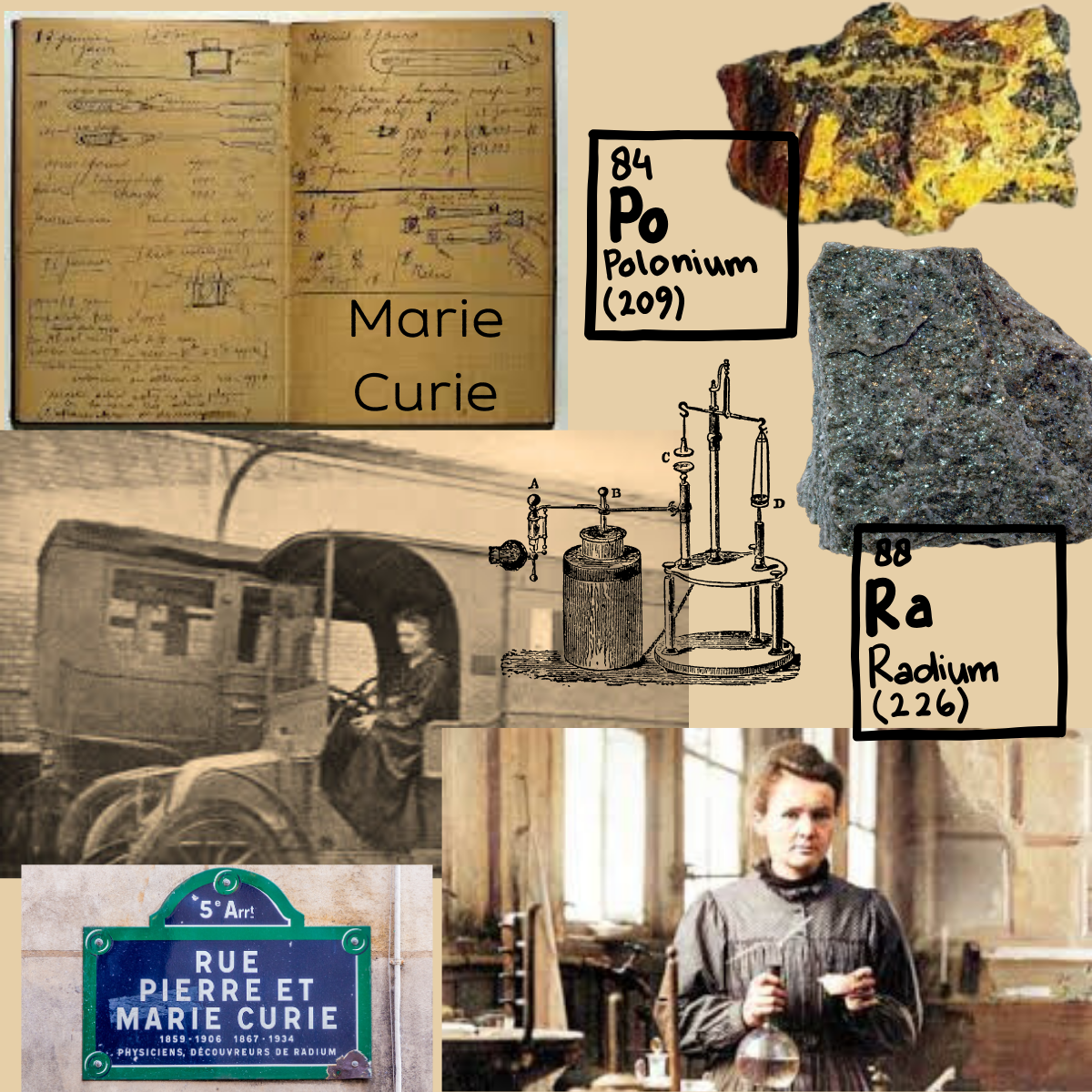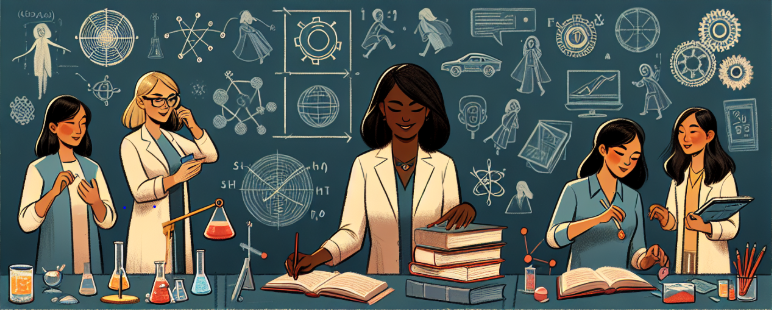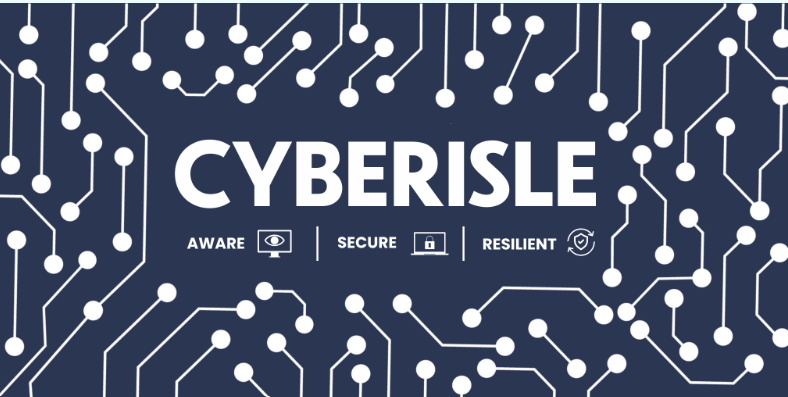Women In STEM Marie Curie - A Radioactive Legacy
Marie Curie

Born on 7th November 1867 in Warsaw, Poland, Marie Curie (née Maria Skłodowska) was a pioneer in every sense of the word. She was the youngest of five children in a family full of educators, her early interest in science was nurtured by her father, a physics and mathematics teacher who lost his job due to pro-Polish sympathies under Russian rule. Her mother, was a headmistress and instilled in her a love of learning, sadly her mum died when Marie was only 10.
At 15, Marie graduated top of her high school class, and she earnt a gold medal for her academic excellence. Though as a woman, she was unable to attend the University of Warsaw. This did not stop her though, and she and her sister Bronya joined the clandestine “Floating University,” a secret network offering night classes that moved location to evade Russian authorities.
Marie's dream was to study science in Paris, but her family couldn’t afford it. So she worked as a governess for several years, and financially supported Bronya’s medical studies in Paris, with the promise Bronya would one day help her in return. This pact between sisters later allowed Marie to join her in France, a powerful example of women supporting women.
In 1891, Marie moved to Paris to study at the Sorbonne, where she became the first woman in France to earn a PhD in Physics and later the first female lecturer at the university. The science campus at the Sorbonne is often referred to as the Pierre et Marie Curie Campus.
Her scientific career was nothing short of revolutionary. Alongside her husband Pierre Curie and physicist Henri Becquerel, she developed the theory of radioactivity—a term she herself coined. Their discovery earned Marie and Pierre a share of the Nobel Prize in Physics in 1903, making them the first married couple to win a Nobel Prize and Marie the first woman to win a Nobel Prize. After Pierre’s untimely death in 1906 in a tragic accident. Marie continued their work and went on to isolate the elements polonium (named after her beloved Poland) and radium, earning her a second Nobel Prize, this time in Chemistry in 1911.
Still to this day she is the only person ever awarded Nobel Prizes in two different scientific fields.
⸻
A Hidden Heroine of World War I
When the First World War erupted, Marie Curie turned her scientific brilliance to the battlefield. Recognising the potential of X-rays to aid surgery, she developed and deployed mobile radiography units, known as “petites Curies”. These mobile X-ray vans enabled doctors to locate bullets and shrapnel inside wounded soldiers, thus, dramatically improving survival rates.
Curie trained over 150 women, including her own teenage daughter Irène, to operate the equipment and read the scans. She even drove one of the mobile units to the front line herself. Though she received no formal recognition from the French government at the time, historians now credit her with saving countless lives during the war.
⸻
Legacy Outside the Lab
In 1914, Curie founded the Radium Institute (now Institut Curie) in Paris, a world-leading centre for medical research and cancer treatment. The institute trained many future Nobel laureates and continues to be a hub of innovation today.
Marie also allowed her name to be used by the Marie Curie Hospital in north London, which originally opened in 1930. The hospital was staffed entirely by women, treating female cancer patients using radiology and housed pioneering research. Though it was destroyed by a bomb during WWII, it was re-established in 1948 as a charity, now known as Marie Curie, and supports people with terminal illnesses and their families across the UK.
Despite the potentially vast commercial value of her discoveries, Marie refused to patent the process of isolating radium, her belief was - scientific knowledge belonged to the world not just to one person.
⸻
Final Years and Everlasting Influence
Marie Curie died on 4th July 1934 from aplastic anaemia, this was almost certainly caused by years of unprotected exposure to radiation, it was a risk not yet understood in her time. Her laboratory notebooks remain so radioactive they need to be stored in lead-lined boxes and require protective clothing to view them.
In 1995, Marie Curie was laid to rest in the Panthéon in Paris, the first woman to be honoured there on her own merits. She was a scientist, a humanitarian, a mother, a teacher, and a scientific legend.
Folklore has it that her last word was a whispered: “Radium?” Whether this is fact or folklore, it captures the spirit of a woman who devoted her life to the pursuit of knowledge.
⸻
Did You Know?
• Marie Curie spoke five languages: Polish, Russian, German, French, and English.
• She was nominated for a total of five Nobel Prizes and is part of a three-generation Nobel-winning family.
• Her notebooks will remain radioactive for over a thousand years.
⸻
Marie Curie’s Groundbreaking Firsts
• First woman to win a Nobel Prize
• First person to win Nobel Prizes in two scientific fields
• First female professor at the Sorbonne
• First woman entombed in the Panthéon on her own achievements
• First scientist to introduce mobile X-ray units in wartime
• Founder of the Radium Institute (Institut Curie), still active today
Marie Curie was a amazing woman and scientist, her groundbreaking research changed the course of science and medicine, shaping the future. She continues to inspire scientists and advocates for equality around the world.
References and further reading
Little People Big Dreams Book - Marie Curie




